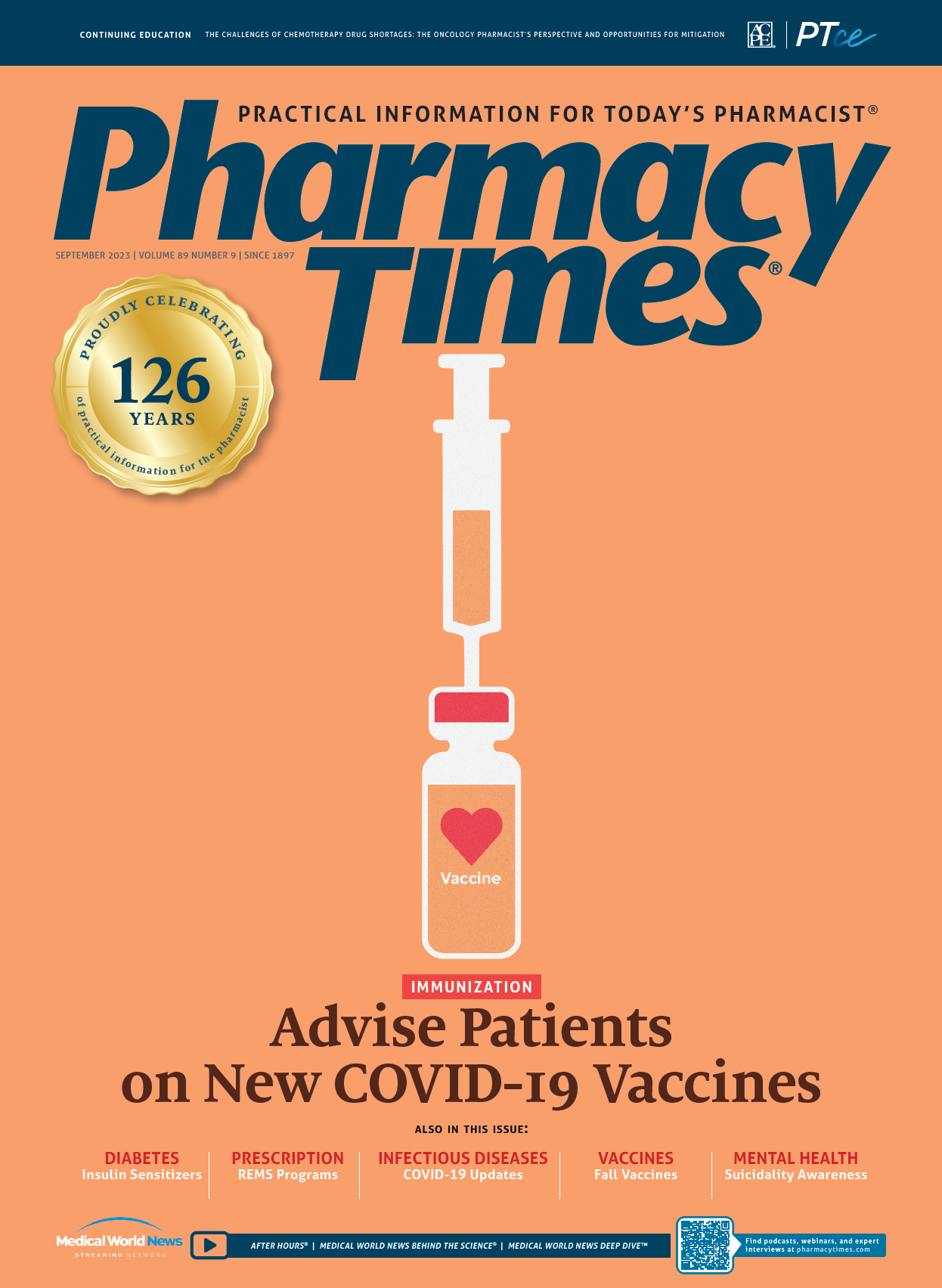Publication
Article
Pharmacy Times
Preserving Patient Access to Compounded Medications Act of 2017
The act would have permitted health care facilities to stock up on compounded medications without forcing the supplying 503A pharmacies to register as outsourcing facilities.
Compunded dosage forms have been an important tool for the provision of health care, allowing the preparation of tailored medications that address the particular needs of a patient (dietary, allergenic, etc).1 They can be classified into 2 categories: sterile (for those drugs administered via injections or into the eyes) and nonsterile (including orally administered medications, creams and ointments, and suppositories).2 To facilitate pharmacy personnel compounding and distributing compounded drugs to patients and partnering health facilities, the US Congress amended sections 503A and 503B of the Federal Food, Drug, and Cosmetic Act in June 2017.3
Image credit: tyyang | stock.adobe.com

Section 503A was established because of the rapid emergence of numerous large-scale distribution compounding firms in the 1990s. This section allowed licensed pharmacies and physician offices to engage in compounding activities; however, they could do so based only on a patient-specific prescription. All compounders were exempted from passing the product premarket approval process, labeling directions for use on the compounded drug, and complying with the Current Good Manufacturing Practices (CGMP) safety and cleanliness requirements. Although Section 503A initially also restricted the level of product advertisement allowed for compounding facilities, this limit was deemed unconstitutional, giving compounders the legal platform to promote their products. However, it was unclear whether the unconstitutionality concerned only a specific point or the entirety of Section 503A. Confused stakeholders were left to freely interpret the statement and started questioning the FDA’s authority as the principal regulator of the compounding industry.1
This confusing framework facilitated unsanitary compounding, leading to multiple cases of disease outbreaks. In September 2012, the CDC began investigating a multistate fungal meningitis outbreak, tracing it to the New England Compounding Center in Framingham, Massachusetts. Multiple lots of the preservative-free methylprednisolone acetate steroid injections were contaminated, with some containing as many as 8 different species of dangerous fungi and/or bacteria.4 More than 700 individuals across 20 states were infected and 64 individuals died, making it the most fatal meningitis outbreak in US history.4,5
In response to the outbreak, the FDA introduced the Drug Quality and Security Act (DQSA) in 2013 and established a strict set of rules for the compounded drug distributors, now defined as “outsourcing facilities” through Section 503B. Entities could voluntarily comply with this specific category’s requirements and were allowed more broad-scale distribution of their products. To enhance compounding safety, the FDA has subjected such facilities to the CGMP requirements and periodically monitored all drug-handling personnel and equipment.1 Section 503B also established supplemental guidelines for outsourcers, such as using only approved ingredients, including a labeling statement indicating the medication is compounded and to report any adverse effects associated with compounded drugs to the FDA.6
Although the DQSA sounded good in theory, the approach the FDA used was heavily criticized by pharmacy groups. The International Academy of Compounding Pharmacists claimed the FDA misinterpreted the DQSA and failed to revise their actions even when approached by Congress. This was the result of the FDA’s severe shortage of funding at the time, which made it particularly difficult to update compounding regulations and procedures.
Smaller pharmacies, which fall under Section 503A guidelines, complained that they were allowed to deliver compounded drugs based only on an individual patient’s prescription, making it impossible for physicians to keep stock of specially compounded medications. For such pharmacies to deliver compounded products with no individual patient prescription, they would have to register under Section 503B, a transition that might cost up to $1 million. Although physicians were able to call on larger-scale outsourcing pharmacies for stocking up, such facilities do not usually take on small orders for in-office use. Thus, smaller pharmacies claimed that it was nearly impossible for patients to receive compounded medication in emergency situations. Other groups claimed that the FDA never adapted the CGMP requirements to the purpose and size of outsourcing facilities and that they were the same as those for large-scale conventional drug manufacturers.7,8
Representatives from more than 300 pharmacies traveled to Washington, DC, hoping to persuade Congress to enact a law that would address the misunderstandings in the industry.8 As a result, the Preserving Patient Access to Compounded Medications Act was introduced in June 2017, sponsored by Morgan Griffith, representative from Virginia. If it had passed, the act would have permitted health care facilities to stock up on compounded medications without forcing the supplying 503A pharmacies to register as outsourcing facilities or comply with regulations other than those imposed by state authorities.6,9 In addition, physicians would have been allowed to prepare sterile compounds in the office and the FDA would have been required to strongly consider compounders’ suggestions on revising existing regulations.9
The legislation served to address health concerns while maintaining patient access to compounded drugs.8 This legislative proposal was not enacted, however, and the same fate met a follow-on legislative proposal submitted in 2019. More legislative activity on this topic may be anticipated.
References
- FDA. FDA’s Human Drug Compounding Progress Report: Three Years After Enactment of the Drug Quality and Security Act (January 2017). June 21, 2018. Accessed August 3, 2023. https://www.fda.gov/drugs/human-drug-compounding/fdas-human-drug-compounding-progress-report-three-years-after-enactment-drug-quality-and-security
- Jones S. What is sterile compounding? Fagron Sterile Services. February 10, 2022. Accessed August 3, 2023. https://www.fagronsterile.com/newsroom/what-is-sterile-compounding#:~:text=Sterile%20compounding%20involves%20preparing%20medication,or%20directly%20into%20thew%20eyes
- Preserving Patient Access to Compounded Medications Act of 2017, HR 2871, 115th Cong (2017). Accessed August 3, 2023. https://www.congress.gov/bill/115th-congress/housebill/2871
- Multistate outbreak of fungal meningitis and other infections. CDC. Updated October 30, 2015. Accessed August 3, 2023. https://www.cdc.gov/hai/outbreaks/meningitis.html
- Ly L. Trial to begin for pharmacist linked to fungal meningitis outbreak. CNN. January 3, 2017. Accessed August 3, 2023. https://www.cnn.com/2017/01/03/health/meningitis-pharmacy-trial-jury-selection/index.html
- FD&C Act provisions that apply to human drug compounding. August 13, 2021. Accessed August 3, 2023. https://www.fda.gov/drugs/human-drug-compounding/fdc-act-provisions-apply-human-drug-compounding
- Barlas S. Compounding law five years later: FDA implementation slow, industry criticism significant. P T. 2018;43(5):271-305.
- Blank C. Drug topics: bill would protect compounded drugs. Partnership for Personalized Prescriptions. June 16, 2017. Accessed August 3, 2023. https://p3rx.org/news/drug-topicsbill-would-protect-compounded-drugs/
- Watson CJ, Whitledge JD, Siani AM, Burns MM. Pharmaceutical compounding: a history, regulatory overview, and systematic review of compounding errors. J Med Toxicol. 2021;17:197-217. doi:10.1007/s13181-020-00814-3

Newsletter
Stay informed on drug updates, treatment guidelines, and pharmacy practice trends—subscribe to Pharmacy Times for weekly clinical insights.





